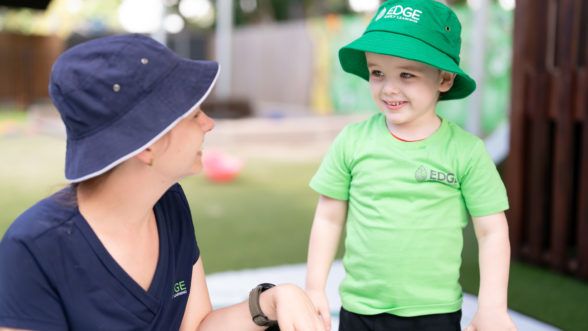
Useful tools
Uncategorised, Useful tools, Wellbeing
07 August, 2023

Anyone who has spent time with a tired, cranky toddler, knows sleep is important! But there comes a point when kids just don’t need to nap during the day anymore. Since you’ve already done the hard yards to establish their nap time, transition your child to “quiet time”. There are loads of benefits for them – and it will give you some downtime too.
As children get older, they need less sleep. So how much sleep do 3-year-olds need? Well, while a newborn baby sleeps a whopping 14-17 hours each day, this drops to 11-14 hours for 18- month-olds and 10-13 hours for children aged 3-5 years. The sweet spot will be different for each child, so keep an eye out for the signs your child is getting enough sleep overnight to power them through a full day. That will let you know when to drop the day nap.
There are a number of behaviours that signal it may be time for toddler day sleeps to stop:
When a toddler starts having trouble falling asleep at naptime, it can be a sign they are getting enough sleep at night. If they have the energy to play all day and don’t appear tired and cranky, they may be ready to drop their nap.
Toddlers who get too much sleep during the day may find it difficult to fall asleep at night – and no one wants that! Consider whether your child is full of energy at bedtime, stalls going to bed, resists sleep or takes longer to fall asleep when they nap.
Toddlers who start waking earlier in the morning may no longer require naps.
You may like to shorten daily naps before eliminating them entirely. Transitioning children from toddler day sleeps to “quiet time” can also be beneficial. It gives them a transition period, where they can still choose to sleep on days when they are tired and creates a restful time where everyone can recharge. You could allocate a space for quiet time, with a blanket and pillow and quiet activities such as looking at books, doing a puzzle or colouring. Quiet time can help children build their independence, attention span and creativity and develop mindfulness to regulate their emotions. It may also buy you a few minutes of peace – but we make no promises there! Once a toddler has transitioned to no daily naps, it may be helpful to bring forward their bedtime and dinner so they’re not too tired to eat a good meal at the end of the day.
Here’s a guide to how much sleep children need in a 24-hour period:
Source: The Baby Sleep Site
Our educators at Edge Early Learning provide children with quiet activities so they can rest and recharge or choose to sleep when they need to as they start to transition away from daytime naps.